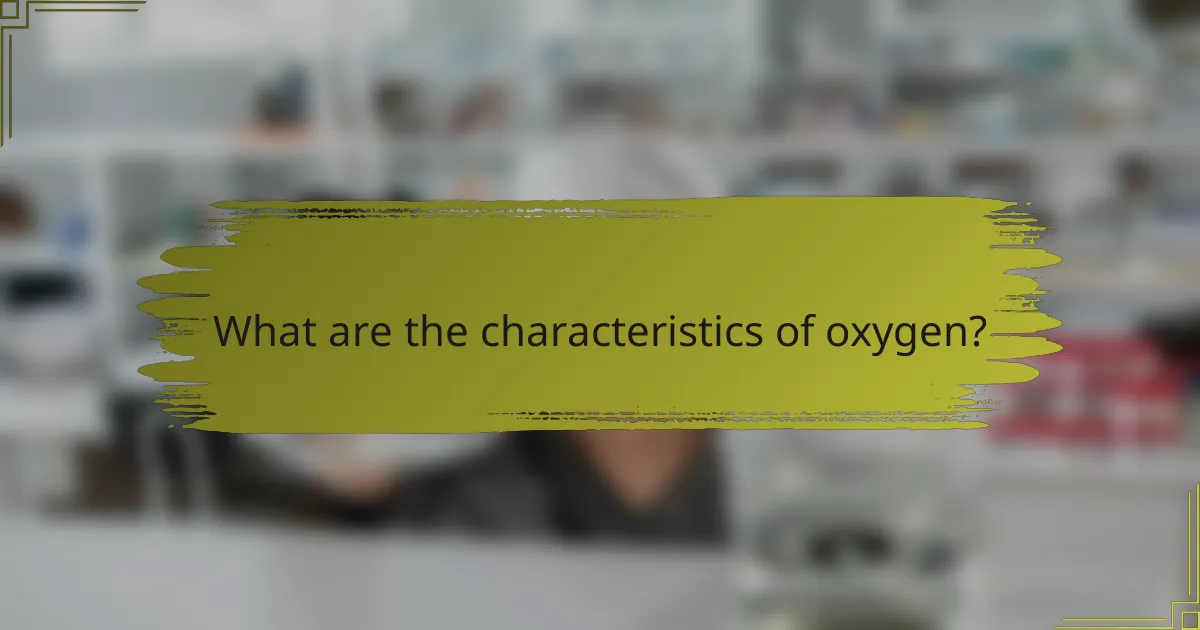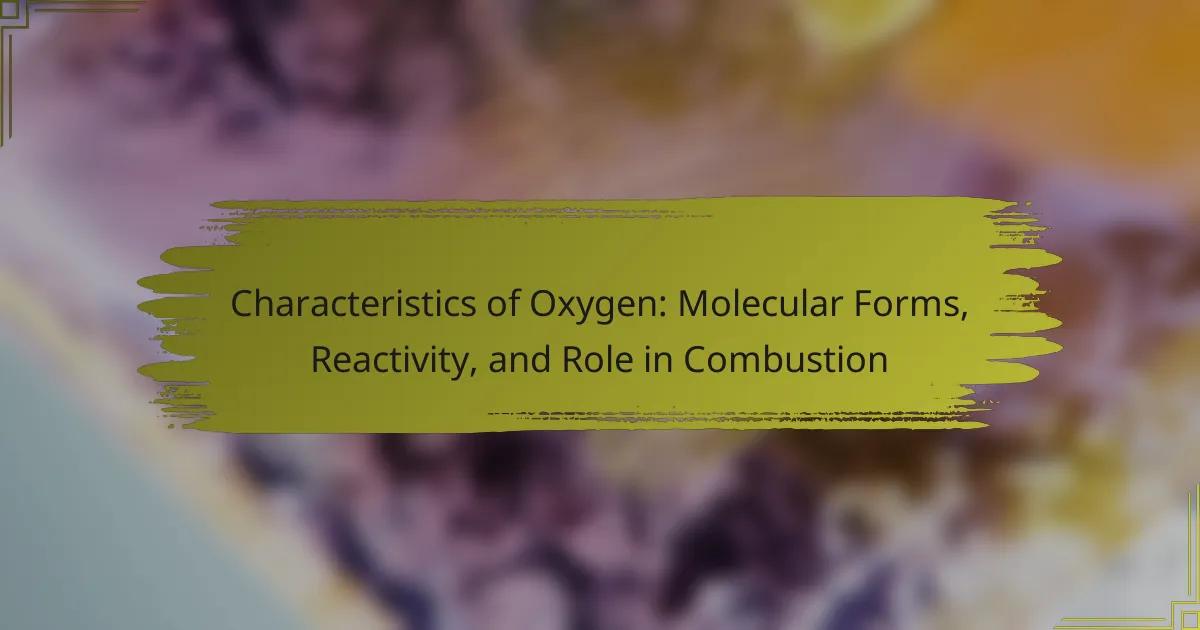
What are the characteristics of oxygen?
Oxygen is a colorless, odorless gas essential for life. It exists primarily as a diatomic molecule (O2) in the atmosphere. Oxygen is highly reactive and supports combustion. It forms compounds with most elements, including metals and nonmetals. The atomic number of oxygen is 8, and its atomic mass is approximately 16. Oxygen is crucial for cellular respiration in aerobic organisms. It also plays a key role in various biological and chemical processes. In nature, oxygen is produced through photosynthesis by plants and algae.
How is oxygen structured at the molecular level?
Oxygen is structured as a diatomic molecule, represented by the chemical formula O2. This means each molecule consists of two oxygen atoms bonded together. The bond between the atoms is a double covalent bond, sharing four electrons. Oxygen atoms have six electrons in their outer shell. This configuration allows them to form stable bonds with other elements. The molecular structure of O2 is essential for its role in combustion. During combustion, O2 reacts with fuels to produce energy, carbon dioxide, and water. This reaction is fundamental to many biological and industrial processes.
What are the different molecular forms of oxygen?
The different molecular forms of oxygen include dioxygen (O2), ozone (O3), and singlet oxygen (1O2). Dioxygen is the most common form, essential for respiration in aerobic organisms. Ozone is found in the Earth’s stratosphere and protects against ultraviolet radiation. Singlet oxygen is a high-energy form that plays a role in various chemical reactions. Each form has distinct properties and functions in biological and environmental systems.
How do these molecular forms differ in properties?
Molecular forms of oxygen differ in properties primarily due to their structural variations. The most common forms are diatomic oxygen (O2) and ozone (O3). O2 is a colorless, odorless gas essential for respiration and combustion. It supports aerobic life by facilitating cellular respiration. Ozone (O3), on the other hand, is a pale blue gas with a distinct smell and serves as a protective layer in the stratosphere.
The reactivity of these forms also varies significantly. O2 is generally less reactive than O3. Ozone is a powerful oxidizing agent. It can react with various pollutants and is used in water treatment. The bond structure in O3 makes it more reactive, allowing it to break down harmful substances.
In summary, the differences in properties between O2 and O3 stem from their molecular structure, reactivity, and roles in environmental processes.
Why is oxygen important for chemical reactions?
Oxygen is crucial for chemical reactions because it acts as an oxidizing agent. This characteristic enables oxygen to facilitate combustion and respiration processes. In combustion, oxygen reacts with fuel to release energy, producing heat and light. In cellular respiration, oxygen helps convert glucose into energy within cells. The presence of oxygen increases reaction rates by providing necessary energy to break chemical bonds. Moreover, many organic and inorganic compounds require oxygen for synthesis and degradation. Overall, oxygen’s role in these reactions is fundamental for energy production and sustaining life.
What role does oxygen play in oxidation reactions?
Oxygen acts as an essential reactant in oxidation reactions. It facilitates the transfer of electrons from one substance to another. During these reactions, oxygen typically gains electrons, resulting in its reduction. This process often releases energy, which can be harnessed for various applications. For example, in cellular respiration, oxygen helps convert glucose into energy. In combustion, oxygen reacts with fuels to produce heat and light. The presence of oxygen is crucial for sustaining these chemical processes. Without it, many oxidation reactions would not occur efficiently or at all.
How does oxygen’s reactivity vary with different elements?
Oxygen’s reactivity varies significantly with different elements. It readily reacts with metals, forming oxides, such as iron oxide or rust. Oxygen’s interaction with non-metals is more complex. For example, it forms covalent bonds with carbon in combustion reactions, producing carbon dioxide. In contrast, oxygen’s reactivity with noble gases is minimal due to their stable electron configurations. The electronegativity of elements influences their reactivity with oxygen; highly electronegative elements, like fluorine, form strong bonds with oxygen. Additionally, the state of the element affects reactivity; gaseous elements may react differently than solid ones. Overall, oxygen’s reactivity is dictated by the nature of the element it encounters, leading to diverse chemical behaviors.
How does oxygen contribute to combustion processes?
Oxygen is essential for combustion processes as it acts as a reactant that supports the burning of fuels. In a combustion reaction, oxygen combines with a fuel, such as hydrocarbons, to release energy in the form of heat and light. This reaction typically produces carbon dioxide and water as byproducts. The presence of oxygen increases the energy yield from the fuel. Combustion requires a specific concentration of oxygen, usually around 16% in the atmosphere, to sustain the reaction. Without sufficient oxygen, combustion becomes incomplete, leading to the production of carbon monoxide and other pollutants. Thus, oxygen’s role in combustion is critical for both energy production and environmental impact.
What is the chemical process of combustion involving oxygen?
Combustion is a chemical process that occurs when a substance reacts rapidly with oxygen. This reaction produces heat and light. The primary products of combustion are carbon dioxide and water vapor. In complete combustion, the fuel is fully oxidized. Incomplete combustion can occur with limited oxygen, resulting in carbon monoxide and soot. The reaction can be summarized by the equation: Fuel + O2 → CO2 + H2O + energy. This process is fundamental in various applications, including engines and heating systems. The energy released during combustion is harnessed for work or heat.
How does the availability of oxygen affect combustion efficiency?
The availability of oxygen directly influences combustion efficiency. Sufficient oxygen levels enhance the oxidation of fuel. This leads to more complete combustion. Incomplete combustion occurs when oxygen is limited. It results in unburned fuel and lower energy output. Studies have shown that optimal oxygen levels can increase efficiency by up to 30%. Therefore, maintaining adequate oxygen supply is crucial for maximizing combustion performance.
How does oxygen interact with other substances during combustion?
Oxygen interacts with other substances during combustion by acting as an oxidizing agent. In this process, oxygen molecules react with fuel, such as hydrocarbons. This reaction releases energy in the form of heat and light. The combustion typically produces carbon dioxide and water as byproducts. For example, when methane (CH4) burns, it reacts with oxygen (O2) to produce carbon dioxide (CO2) and water (H2O). This reaction can be represented by the equation: CH4 + 2 O2 → CO2 + 2 H2O. The presence of oxygen is essential for sustaining combustion. Without sufficient oxygen, combustion may be incomplete, leading to the formation of carbon monoxide (CO) and soot. Therefore, oxygen’s role is crucial in determining the efficiency and completeness of the combustion process.
What are the implications of oxygen levels on fire safety?
Oxygen levels directly influence fire safety. Increased oxygen concentrations enhance combustion, making fires more intense and harder to control. In environments with higher oxygen levels, materials ignite more easily. This can lead to faster spread of fire. Conversely, lower oxygen levels can suppress fire growth. Fire safety protocols must consider oxygen levels in confined spaces. For instance, oxygen-enriched atmospheres can increase the risk of explosions. Fire prevention measures often include monitoring oxygen levels to ensure safety.
How can understanding oxygen characteristics improve fire prevention strategies?
Understanding oxygen characteristics can significantly enhance fire prevention strategies. Oxygen supports combustion, which is essential to understand for effective fire control. By analyzing oxygen’s reactivity, fire prevention measures can be tailored to limit its availability. For instance, reducing oxygen levels in a given environment can slow down or extinguish fires. Specific techniques, such as using inert gases, can displace oxygen and prevent ignition. Moreover, knowledge of oxygen’s molecular forms aids in predicting fire behavior in various materials. This understanding allows for the development of fire-resistant materials and better emergency response protocols. Studies indicate that environments with controlled oxygen levels experience fewer fire incidents. Thus, oxygen characteristics play a critical role in shaping effective fire prevention strategies.
What best practices should be followed to manage oxygen in combustion environments?
To manage oxygen in combustion environments effectively, maintain proper ventilation to ensure adequate oxygen supply. This prevents incomplete combustion and reduces harmful emissions. Monitor oxygen levels continuously using reliable sensors. This allows for real-time adjustments to maintain optimal combustion conditions. Control fuel-to-air ratios accurately. This ensures that the right amount of oxygen is present for efficient combustion. Implement safety protocols to prevent oxygen enrichment, which can lead to fire hazards. Regularly inspect and maintain combustion equipment to ensure it operates within safe oxygen levels. Training personnel on oxygen management practices enhances safety and efficiency in combustion processes.
Oxygen is a colorless, odorless gas essential for life, primarily existing as a diatomic molecule (O2) in the atmosphere. This article explores the characteristics of oxygen, including its molecular structure, different forms such as dioxygen (O2), ozone (O3), and singlet oxygen (1O2), along with their distinct properties and roles in chemical reactions. It highlights oxygen’s critical function in combustion processes, its reactivity with various elements, and the implications of oxygen levels on fire safety and prevention strategies. Understanding these aspects is vital for effective management of oxygen in combustion environments and for enhancing fire safety measures.
